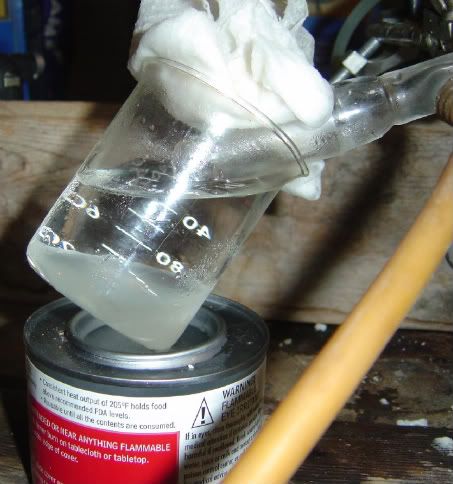| Quote: |
| Originally posted by smuv it's been covered; wash with H2SO4; it will absorb the ether via multiple reactions; namely formation of an etherate and ethyl sulfates. |
But what if it was the ether i wanted to keep?
Only joking, have you since found any browning/disscolouration in your ethyl bromide? On one run when i went far too hot i recall that even after fractionation it went brown after several days, a second sulphite wash cleared it up. Nice photo essay, that saucepan has seen better days. did someone large sit on while it was sideways?

[Edited on 10-7-2008 by Panache]


























